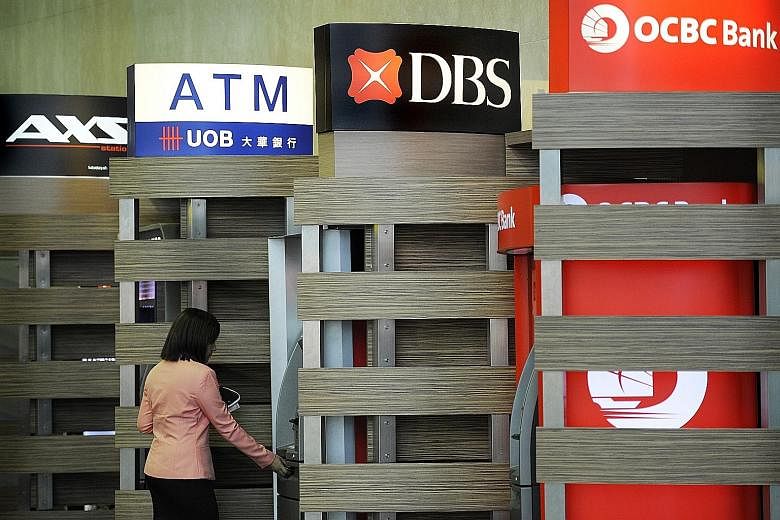The issues of slowing loan demand and vulnerable asset quality were front and centre for the local banks in the third quarter as the commodity crunch and economic headwinds continued to pressure corporate and consumer borrowers.
All three reported subdued single-digit loan growth in the three months to Sept 30, compared with growth in the second quarter.
OCBC Bank's loans grew 1 per cent quarter on quarter, United Overseas Bank saw only a 0.4 per cent expansion, while DBS Group, which reported its results yesterday, grew loans by 2 per cent.
The year-on-year growth rates were propped up by currency effects but still fell in the 3.7 to 9 per cent range.
The slowdown reflected the choppy economic environment in the banks' regional markets, where demand is unlikely to see a strong pick-up soon, said OCBC chief executive Samuel Tsien last week, who also forecast a low single-digit loan growth this year.

DBS chief executive Piyush Gupta noted yesterday that loans growth will be 5 to 6 per cent.
Their views were in line with the still-stagnant demand for credit. Last week, the Monetary Authority of Singapore said total bank lending in September dropped 0.8 per cent from August and grew only 0.6 per cent from a year ago.
But the banks could take comfort in the margin boost they saw in the quarter, when loans were repriced to peg with the more favourable interbank and swap offer rates.
The three-month Singapore Interbank Offered Rate (Sibor) is hovering above 1 per cent, up from the 0.4 per cent level of the past four years.
The banks reaped better loan yields as a result, with net interest margins shooting up to 1.77 per cent for UOB and 1.78 per cent for DBS, its highest in four years.
Further improvement in net interest margins is the key for banks to deliver stable earnings in the coming quarters, Nomura Asean banks research head Jaj Singh told The Straits Times.
"Loan growth is slowing across the region and it could result in pedestrian earnings growth if net interest margins do not expand. So far (they) were up year on year because the local assets benefited from higher local interest rates, but it will depend on interest rates moving up further from here on."
Aside from managing their margins, the banks are also cautiously monitoring their asset quality in response to persistently high non-performing loans (NPL).
The NPL ratio was 0.9 per cent for OCBC and 1.3 per cent for UOB, both higher year on year, while it was unchanged at 0.9 per cent at DBS.
Moody's vice-president and senior credit officer Eugene Tarzimanov said: "One trend we've observed in the past couple of years is that the quality of foreign books continues to deteriorate. More recently, a very mild deterioration is also seen in the domestic portfolio.
"In key regional markets such as Malaysia and Indonesia, their clients are being squeezed by the commodity crunch.
"In Singapore, the banks have large exposures to oil and gas companies, which along with commodities finance, account for around 10 per cent of total bank loans."
All three banks stressed that their oil and gas exposure posted no systemic risks, but OCBC's move to restructure its loans to firms pushed up its NPL ratio. UOB's increase was also mainly from two customers in the oil and gas and commodity sectors.
The banks' asset quality will hinge on oil prices, but for now Moody's sees no cause for panic.
Mr Tarzimanov said: "Assuming our projected Brent recovery to around US$53 per barrel in 2016, oil and gas NPLs would remain manageable. Despite the headwinds, we maintain our Aa1 credit rating for all three banks because of their good buffers and risk management. This puts them still in the top 1 per cent bracket in the world."


